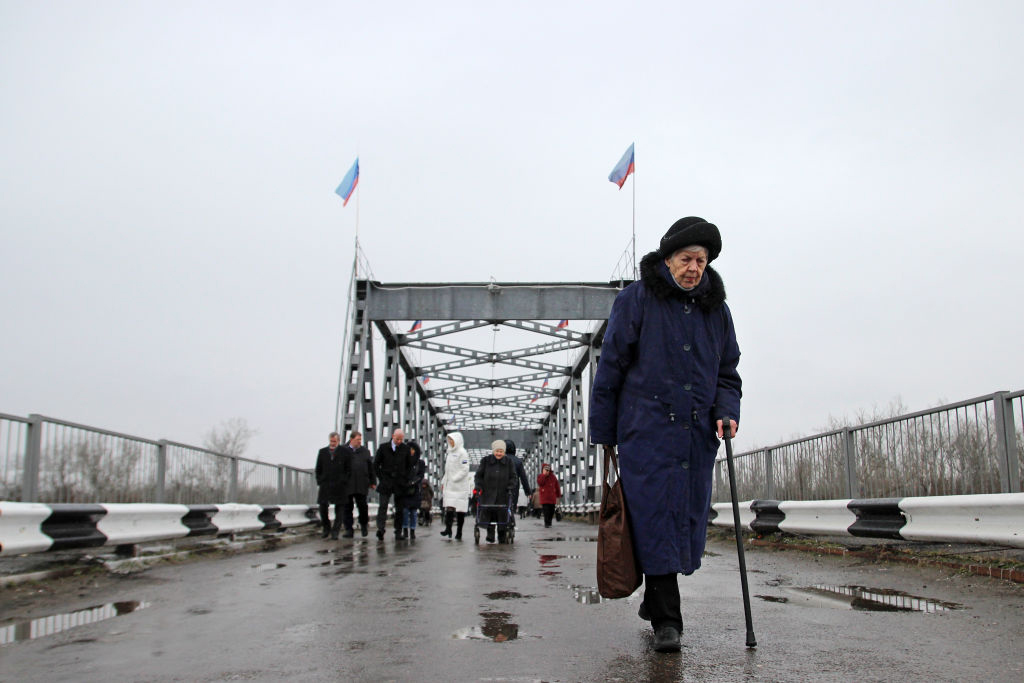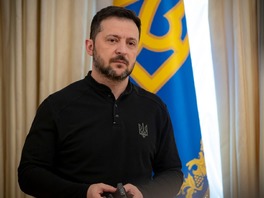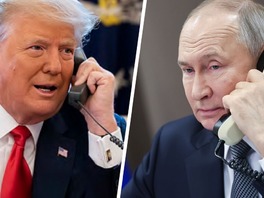All eyes of those who follow the Russian-Ukrainian standoff in Eastern Ukraine have been on the Normandy Summit in early December, which took place in Paris after a long pause. The meeting of French, German, Russian, and Ukrainian leaders signaled a continuation of a long-frozen multilateral format designed to resolve Europe’s most violent conflict since the breakup of Yugoslavia.
However, the results of the meeting have not become a breakthrough. Core political issues related to the settlement (elections, control over the border, amnesty, special status) proved to be much tougher than those on the agenda of preparatory talks. As a result, there are signs of the conflict coming back to its most likely trajectory of a low-intensity military standoff. If that is the case, the window of opportunity will be much more difficult to reopen. A stalemate is very likely to continue for another four years.
Outcomes of the Paris Summit: Lack of Progress
The meeting of the leaders of the four countries has been long waited for. On the one hand, the format has been deadlocked since 2016, when the last summit took place in Berlin. Lack of zone of possible compromise impacted the dynamics of the conflict in general; as well as all formats of managing it. On the other hand, after Volodymyr Zelenskiy won the elections in Ukraine, some steps have been taken and some signals sent that there may be some new developments in attempts to resolve the conflict. A meeting in Paris was expected to provide a new agenda for managing the conflict.
To put it short, it didn’t. The potential created in several months before the summit wasn’t used fully. Results of the meeting were neither a breakthrough nor a clear step-by-step strategy. The final communiqué reaffirmed the parties’ adherence to Minsk Agreements. It also underlines the intention to introduce a ceasefire by the end of 2019; to continue disengagement of forces; conduct another round of exchange; and create new crossing points at the front line. In what concerns political steps, parties agreed on Steinmeier formula to be implemented into Ukrainian legislature and also aimed the Law on the Special Status to become permanent. In four months they agreed to hold another meeting.
Ukrainian president traveled to Paris with the major task to finalize his efforts aimed at bringing peace to the country. A broader version of this task was about resolving the conflict completely, which would include withdrawal of Russian forces, the return of border control to Ukraine, and holding elections – quite an ambitious goal almost outside any realistic expectations. A more modest variation has been about freezing the conflict and establishing a stable and lasting ceasefire. Neither of those has been achieved in Paris.
The Normandy summit on the 9th of December has become a culmination of a long and difficult negotiation process, underway since summer. Several important steps have been taken to build some trust in relations between Kyiv and Moscow and proceed to “peace”, a promise underlined by Zelenskiy in both campaigns. The two countries exchanged prisoners in September under the “35 for 35” formula. Disengagement of forces has been complete in three points, enabling further talks about withdrawal along the whole line of contact. Russia returned Ukrainian vessels, captured during the crisis in the Kerch Strait in November 2018. Those moves injected some trust into relations between Russian and Ukrainian leaders, enough to get Vladimir Putin on board for a first top-level meeting in a Normandy Format since 2016.
But that amount of trust proved to be not enough for dealing with the hardest issues of conflict in Eastern Ukraine: elections, control over the border, and autonomy for territories currently uncontrolled by the Ukrainian government. Russia has been firmly stuck to the Minsk Agreements, stipulating that Ukraine would regain control only after local elections are held. For Ukraine, that option is politically impossible.
 People attend a rally against surrender in Kyiv, Ukraine, October 14, 2019
People attend a rally against surrender in Kyiv, Ukraine, October 14, 2019
The meeting in Paris has brought peace a bit closer. But “a bit” may only be quantified at a one-digit percentage. The potential generated before the summit has not been used to its fullest. The parties repeated provisions of the Minsk Agreement, including those about a ceasefire, disengagement of forces, and demining. However, Minsk has long ago become rather a symbol than a working plan. Agreements on issues like those mentioned above made sense as part of a bigger deal. Without it they would be ignored just like before.
At the summit the Ukrainian president took a safe approach. “Red lines”, real or imagined, have not been crossed. Rhetoric and decisions have been picked in the safest possible way, which is the usual line of Ukrainian leadership in recent years.
Personal meeting of Ukrainian and Russian presidents has become one of the major outcomes of the summit. Some would call it a diplomatic achievement for Zelenskiy, but Putin also scored some points. His appearance at the summit sent a message, that Russia is ready for negotiations and is not blocking attempts to resolve the conflict. On the other hand, Kremlin stick to its initial position and reinforced its contacts with European leaders.
The Window of Opportunity Is Closing
Events in recent weeks indicated that Ukrainian society is becoming more polarized, communication between officials and society is weakened, while spoilers to the peace process are becoming stronger. Under such circumstances it is becoming extremely difficult to proceed with the peace agenda and make uneasy decisions aimed at ether freezing or resolving the conflict. Recent reaction from Zelenskiy indicates that he hardly was ready to face these challenges.
The crisis spills over the issues of foreign policy. Last week a plane carrying Ukrainians from China was met by the local population with fierce protests in an attempt to not let them in because of possible infection by SARS-Cov-2 virus. That was indication of a deep mistrust of state policies in almost every sphere. People do not feel a state is functional enough to provide security, prosperity, and justice. In a long-term perspective that would certainly result in serious challenges, but already today it generates cleavages inside Ukrainian society and feeds suspicion and fear.
Discussions turn emotional and often lose a constructive approach, be it over healthcare or foreign policy. A plan entitled “Twelve Steps Toward Greater Security in Ukraine and the Euro-Atlantic Region” has been drafted on the eve of the Munich Security Conference, published on its webpage and then deleted after the initial reaction from Ukrainian representatives. The plan offers a set of measures aimed at de-escalation of the conflict in the Eastern Ukraine and improve conditions for further settlement. Carrying signatures of European, American, Russian, and Ukrainian experts and former officials, it triggered an overemotional reaction from those, who disagree with its provisions. Signatories from Ukraine were personally bullied, and a wave of hatred was a substitution for a discussion of content. Not the first and not the last plan which put forward debatable ideas, but the overreaction this time indicates a mood within the society – and it’s not favoring progress in peace talks.
 A Russian tank in Donetsk
A Russian tank in Donetsk
That opens up additional space for spoilers. Peace plans are systemically rejected by those in Russia, Ukraine, and the so-called “DNR/LNR” who benefit from an on-going military standoff. Some of them enjoy economic preferences or shadow trade, others receive political bonuses. Dealing with spoilers is tough in managing any conflict, but their positions seem especially strong in the one in Eastern Ukraine.
The summit in Paris signaled that further progress in resolving the conflict would be very problematic for all parties. Further events provided additional evidence to support this assessment.
In January of 2020, eleven Ukrainian soldiers have been killed at the contact line (comparing to six in January of 2019). The overall security situation has significantly deteriorated. The culmination happened on the 18th of February with an intense artillery battle close to Zolote. Under such circumstances not only it is difficult to proceed with further disengagement of forces, but already achieved results are under threat. One of the immediate outcomes of the shellings was a suspension of the launch of the National Platform for Reconciliation and Unity, a project announced by an advisor to the Secretary of the National Security and Defense Council, Serhiy Syvoho. The initial idea was to start a dialogue between people on the different sides of the contact line and thus to foster peace process. This idea, in turn, has been flowing from Zelenskiy’s address at the Unity Forum in Mariupil in October, 2019, which stressed the importance of large-scale national dialogue. The initiative, designed to deal with humanitarian issues raised by an on-going conflict, is unlikely to succeed in the nearest future – not least due to the recent developments.
De facto, in first two months of 2020 the experiment with disengagement has largely failed.
Internal discourses have also changed in both Ukraine and Russia. Zelenskiy and his peace efforts are treated with more suspicion than before by the Kremlin, which would eventually lead to the same lack of trust as there was between Putin and Poroshenko. Both sides blame each other for non-fulfillment of promises, which is usually a bad signs for a peace process. In Ukraine a change of rhetoric is also visible. President Zelenskiy’s appearance at the Munich Security Conference resembled those by the previous president; while any ideas about a possible dialogue with Moscow are taken more aggressively by Ukrainian politicians. Even appointment of Andriy Yermak Head of presidential office is unlikely to signal a more negotiation-prone policy, since at this position he will be much more open and vulnerable to critics for any attempts to negotiate with Russia. To put it short, recent developments have largely diminished internal potential for further dialogue with Russia in Ukraine.
Now both countries face a familiar choice: either to make some major concessions for resolving or at least settling the conflict, or to continue a low intensity military engagement. The former option is linked to political risks, while the latter brings about long-term deterioration in security environment for both.
A stumbling block for upcoming months would be the sequence of holding elections and return of border under Ukraine’s control. Russia insists on elections first, as it is foreseen by the Minsk Agreements. In Moscow’s view only that order may secure its strategic goal of preserving some level of leverage over Ukraine by keeping a presence in its currently uncontrolled Eastern parts. For Ukraine allowing elections on territories which are considered occupied may generate numerous problems, from weakened argumentation on Russia’s direct involvement into the conflict to undermining political stability in the country. Leaving the conflict as it is may seem the safest option for both countries, but it is hardly the best one.
 Abandoned and heavily damaged buildings are seen in Sloviansk city of Donetsk Region, Ukraine on February 11, 2016
Abandoned and heavily damaged buildings are seen in Sloviansk city of Donetsk Region, Ukraine on February 11, 2016
At the same time, further negotiations seem problematic not only from a political but also from a diplomatic point. Dealing with substantial issues will be difficult. Zone of possible agreement is still absent or very narrow at best. Russia insists on holding elections on the occupied territories first. In Moscow’s view, that was the sequence foreseen by the Minsk Agreement, and Ukraine should follow it. In Ukraine’s view, elections should (and can) be held only after deoccupation and return of control over the Ukrainian-Russian border to Kyiv. Key argument here is that security should precede any elections. This point of conflict has long been on the agenda. Attempts to resolve it, including the infamous Steinmeier formula, have been taken from time to time, but with little success. The issue proves to be too tough to deal with.
Without resolving the problem of elections it will be almost impossible to move further with legislative amendments, amnesty, social, and cultural issues. Each of them is a separate puzzle. To bring all of them together and seek for “expanding the pie” solutions require much trust, which is not the case in today’s bilateral relations.
Under such circumstances the only realistic choice left for Ukrainian leadership is to bring old ideas back to life. Some of them have been examined in details and studied in depth years ago, also by ICPS. Talks about peace-keepers are already underway; the ones about interim international administration may soon follow. But under current circumstances those would hardly bring about better results than before. Another round of small steps would also be even more difficult to arrange and less likely to bring about major changes in the conflict.
Conclusion
With the agreement to hold another exchange of prisoners, continue with disengagement of forces, and have another meeting in four months, the parties will now concentrate on issues of elections and amendments into Ukrainian legislature. The so-called “Law of Special Status” has been extended for another year. It will take significant efforts from both Ukraine and Russia to change the dynamics of the conflict and make peace a reality in the end of 2020.
To a large extent, the impulse for peace negotiations has gone after the Paris summit of Normandy Format. Ukraine and Russia are back to mistrust, suspicion, and zero-sum game. Elites in both countries feel it is safer to play the previous scenario of a low-intensity standoff. Another attempt to change these dynamics would require much political effort.
In a broader picture, the conflict in Donbas will continue to negatively impact European security. At the same time international setting is flexible. With transformations in the EU and on the global level, it is possible, that new approaches to dealing with it will surface. However, without a fundamental political settlement between Ukraine and Russia, Europe is unlikely to feel secure enough.
The international community should pay special attention to measures that could enhance dialogue inside Ukraine over major red lines and core issues of the conflict in Donbas. Otherwise, no Ukrainian president would be able to move the conflict out of a dead end.





